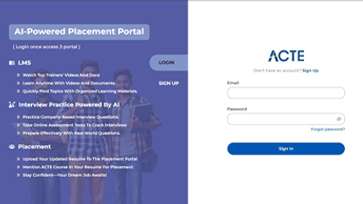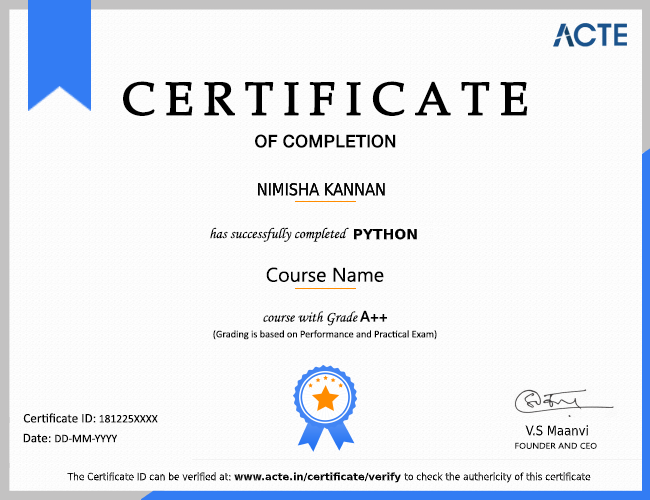The purpose of Artificial Intelligence is to enhance human capabilities, and to enable us to make accurate and effective decisions. That’s the answer from a technical standpoint. From a philosophical perspective, Artificial Intelligence has the potential to help humans enjoy more meaningful lives without having to work hard, and to manage the complex interconnected web of individuals, companies, states, and nations in a way that's beneficial to all.
Additional Info
Roles and Responsibilities of Artificial Intelligence:
The following are among the roles available to Artificial Intelligence Specialists:
- Science researchers (tasked with planning, conducting, and analyzing research projects)
- Software Engineer (focused on a few areas of development, including networks, operating systems, databases, or applications)
- C# developer (able to handle many aspects of developing an application, including but not limited to scalability, safety, and testing.)
- Engineers in information security (protect networked systems and networks in an organization)
- Manages all phases of software development (design, installation, testing and maintenance of software systems.)
- Developers of Java (specialised types of programmers who integrate Java into business applications, software and websites).
- Software Analyst (describes software requirements and specification documents based on analysis of the software application domain.)
Types of Artificial Intelligence:
All types of AI do not cover all these areas at the same time. The purpose of different Artificial Intelligence entities is what determines their differences. (Based on functionalities) Artificial Intelligence can be classified into 3 types:
- Artificial Narrow Intelligence (ANI)
- Artificial General Intelligence (AGI)
- Artificial Super Intelligence (ASI)
Artificial Narrow Intelligence (ANI)?
The market is most commonly dominated by this form of artificial intelligence right now. In these Artificial Intelligence systems, a single task will be able to be performed perfectly. The capabilities they offer are narrow by definition, like recommending products for online shoppers or predicting the weather. There is only one type of Artificial Intelligence in existence today. Often, they perform very well in very controlled environments with a limited set of parameters, coming close to human performance in very specific situations and exceeding it.
Artificial General Intelligence (AGI)?
AGI is still an academic concept. A human-level AI is one that has cognitive capabilities comparable to those of humans, spanning a wide range of domains such as language processing, image processing, computational thinking, and so on.
The AGI system is still quite a way off. To mimic human reasoning, an Artificial General Intelligence system would have hundreds of Artificial Broad Intelligence systems working together. It has taken them about 40 minutes to simulate a single second of neuronal activity, even with the most sophisticated computing systems and infrastructures like Fujitsu's K and IBM's Watson. It also illustrates the magnitude of the challenge of creating an AGI with our current resources because of the intricacy and interconnectedness of the human brain.
Artificial Super Intelligence (ASI)?
ASI represents the logical progression from AGI and almost borders on science-fiction territory. We can surpass human intelligence with a computer system that simulates artificial super intelligence (ASI). Making better art, building emotional relationships, and taking rational decisions are all components of decision making.
We can expect AI systems to rapidly advance into realms that we could never even imagine once we achieve Artificial General Intelligence. Despite the disparity between AGI and ASI being relatively small (some argue as little as a nanosecond, because that's how fast AI learns), the long journey ahead of us towards AGI itself makes this seem like a concept far into the future.
Why is artificial intelligence important?
AI automates repetitive learning and discovery through data. AI automates frequent, high-volume, computerized tasks, instead of automating manual tasks. This makes it dependable and fatigue-free. The human component is still important for setting up the system and asking the right questions.
AI adds intelligence to existing products. AI is going to be incorporated into products you already use, much like Siri is becoming a feature of Apple's new line of products. By combining automation, conversational platforms, bots, and smart machines, it is possible to improve a wide range of technologies. Smart cameras, security intelligence, and investment analysis are examples of upgrades at home and in the workplace.
AI adapts through progressive learning algorithms to let the data do the programming. Artificial intelligence can help algorithms as it finds structure and regularity in data. Online recommendations can be learned by an algorithm, just like chess can be learned by an algorithm. A new set of data is fed into the models, and the models adapt.
AI uses neural networks with many hidden layers to analyze more and deeper data. Once upon a time, it was impossible to develop a fraud detection system where five layers are hidden. The advent of massive data sets and incredible computing power has changed everything. A deep learning model, which learns directly from data, requires a lot of data to train.
Deep neural networks are capable of achieving incredible accuracy through AI. Alexa and Google, for example, use deep learning to enhance your interactions. The more you use these products, the more accurate they become. The use of AI techniques such as deep learning and object recognition in the medical field is improving the accuracy of cancer detection on medical images.
AI gets the most out of data. Algorithms that self-learn benefit from the data themselves. Answers can be found in the data. To find them, you just need to use artificial intelligence. It can increase a company's competitive edge because data plays a more vital role today than ever before. Regardless of how similar everyone's techniques are, the best data will win in a competitive industry.
Benefits of Artificial Intelligence
Artificial intelligence holds both great promise and many benefits.
1. For the Economy, Business, and Industries.
The economy can benefit from artificial intelligence by advancing the evolution of work. Humans will be able to do their jobs better using robots and artificial intelligence, not have their jobs taken away. Humans combined with machines won't be able to stop them.
Deep learning and machine learning can enable AI to become smarter over time, increasing a business' efficiency. AI can also help reduce human error and study historical data in order to save money.
It will become increasingly important to use facial recognition, pattern recognition, and content analysis tools. Enhanced capabilities will benefit academic research, health science companies, and technology companies.
2. For Humanity and Society
As a result, new opportunities are created thanks to the advancement of artificial intelligence. Our goal is to generate new revenue streams, save money, and create jobs.
A search algorithm using artificial intelligence provides targeted information to enhance users' lifestyle choices. Data entry and email answering will be handled by artificial intelligence. With AI-powered smart homes, you can reduce your energy consumption and improve security.
The improvement of technology has resulted in the elevation of humankind throughout history. Consider the home and the automobile as examples of electricity. Eventually, artificial intelligence may surpass these activities because machines can aid humans in solving more significant, more complex social problems. It will be an era of innovation, with better quality of life.
Human creativity can be greatly increased by artificial intelligence if it is able to handle repetitive tasks. The time available for learning, experimenting, and exploring will increase.
3. In health care and medicine,
An AI wearable will improve diagnostics because the service monitors the user 24/7. By using artificial intelligence, people can gain a deeper understanding of medicine. Doctors can treat patients more effectively using AI-based image diagnosis.
Top Artificial Intelligence Tools/Frameworks
In the twenty-first century, artificial intelligence makes things easier and better every day. Open-source AI tools are already being developed by large companies, such as Google, Facebook and Amazon. In this section we are going to look at a few of the most used AI frameworks and tools.
1. Caffe in Artificial Intelligence Tools
As a deep learning framework favored by AI engineers and even enterprise users for its speed, Caffe was developed by Berkeley Vision and Learning Center. It is capable of processing more than 50 million images in one day with Caffe. Projects related to research, speech, multimedia, and visions are some of the areas where Caffe is extensively used.
2. Tensor Flow
Tensor flow was developed by Google, and it is used to perform numerical computations. A data flow graph is used to carry out the computation
3. Theano in Artificial Intelligence Tools
A very popular open-source library, Theano was developed at the University of Montreal, Quebec, Canada by the LISA group. There are only a few differences between Tensor flow and Theano.
In comparison to Tensor flow, Theano supports a broader range of operations than Tensor flow.
4. Keras in Artificial Intelligence Tools
It is a Python-based library that is used to build neural network applications. Tensor Flow, Theano, and others can be used with it. The project was developed by Francois Chollet, a Google engineer.
This is how Keras works: it doesn't handle any low-level computations, but instead uses other libraries such as Theano and Tensor flow to do it. It is composed of a high-level API and losses and optimizer functions that handle high-level API.
5. Scikit-Learn in Artificial Intelligence Tools
Scikit-Learn is another open-source machine learning library, this time written in Python. Python programs can utilize Scikit Learn for supervised and unsupervised machine learning.
The sci-kit-learn library is based on Scientific Python and must be installed before it can be used. Sci-kit learn offers the following features:
- NumPy: An open-source Python library that includes a lot of mathematical functions and can handle large and multi-dimensional arrays.
- SciPy: A library of scientific and technical modules, including those for linear algebra, optimization, signal processing, image processing, integration, etc.
- Matplotlib: It is used mostly for visualizing and plotting data. Visualizing machine learning models through graphical plots is possible with this tool.
- IPython: A computer console that supports multiple programming languages for interactive computing.
- Pandas: A library for manipulating data and performing analysis.
6. Pytorch in Artificial Intelligence Tools
PyTorch is a scientific package developed with Python that makes use of the GPU (Graphics processing units). The tool provides a very useful API, as well as a very good platform with dynamic computational graphs that can be changed as the program runs.
Artificial Intelligence Certification
AI Certification encompasses the essentials of statistics necessary for Data Science, Python programming, and Machine Learning, along with in-depth knowledge of Artificial Intelligence concepts.
The AI certificate course takes a very practical, hands-on approach to AI Engineering. We provide relevant lab experiences and real-world projects for our AI courses.
For professionals with at least three years of professional experience and a bachelor's degree (at a minimum) in a technical field such as computer science, statistics, physics, or electrical engineering, the Professional Certificate Program in Machine Learning & Artificial Intelligence is designed.































